Volleyball exercises for u12
Goal : develop game insight for attack
- A1 plays the ball to SV.
- Sv set-up to pos.4 where A attacks.
- At the moment A attacks, A1 plays a second ball to SV.
- B & B1 take care of the block. (B1 always starts from pos.3), L defense.
- Second attack of A. place ball. L stands on a mat. Where L is not standing should be played to.
We try to grow into a match form. Block gets points when attack can be stopped. Attack when scored or ball on the mat. Defender when defended.
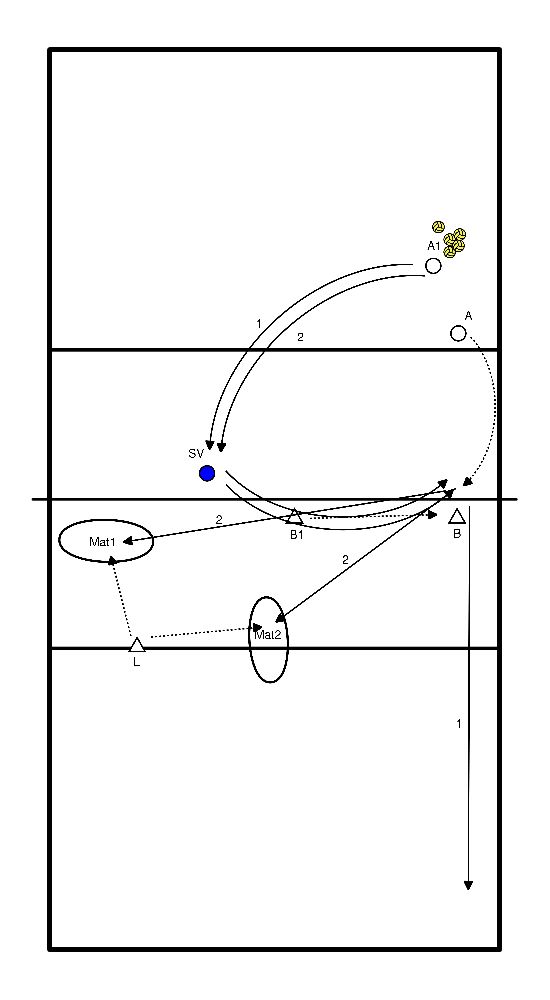
- 2 numbers (preferably variable)
- Trainer throws balls at set position
- Setter calls a set outside and calls a number (1..4)
- Attacker strikes the ball to the named position.
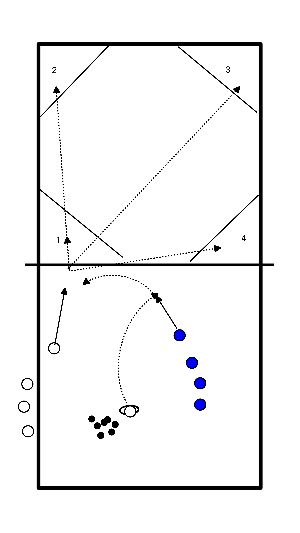
Goal: Libero training and defense
- T plays in tempo the balls to SV.
- SV set-up (2nd tempo) to A (position 3) --> targeted attack to position 1 or to B (position 4) --> targeted attack to position 6.
- L starts from pos 6 + defense to SV2
Extension 1 : After defense from L to SV, set-up to position 4 where C attacks (aimed)
Extension 2 : L2 defended attack from C, C is going to catch ball.
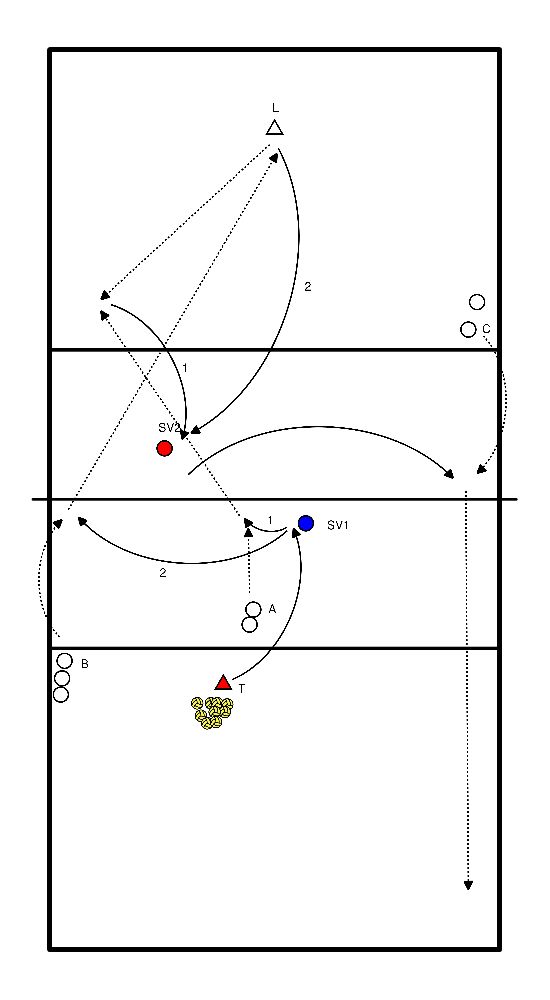
Goal of the exercise is, the playmaker must try to make sure that on the other side of the net a double block can not be formed.
- T plays the balls at a high pace towards pos. 3.
- SV walks in and gives set-up for -or backwards to fool the block.
- B tries to come to a drawbar block on attack.
- SV passes around T after set-up.
- SV1 & 2 switch positions after each set-up.
Expansion :
- Add field defense. (Liberos)
- B's play ball high back over to attacker passing towards pos 3/2
- Exercise starts again from pass attacker.
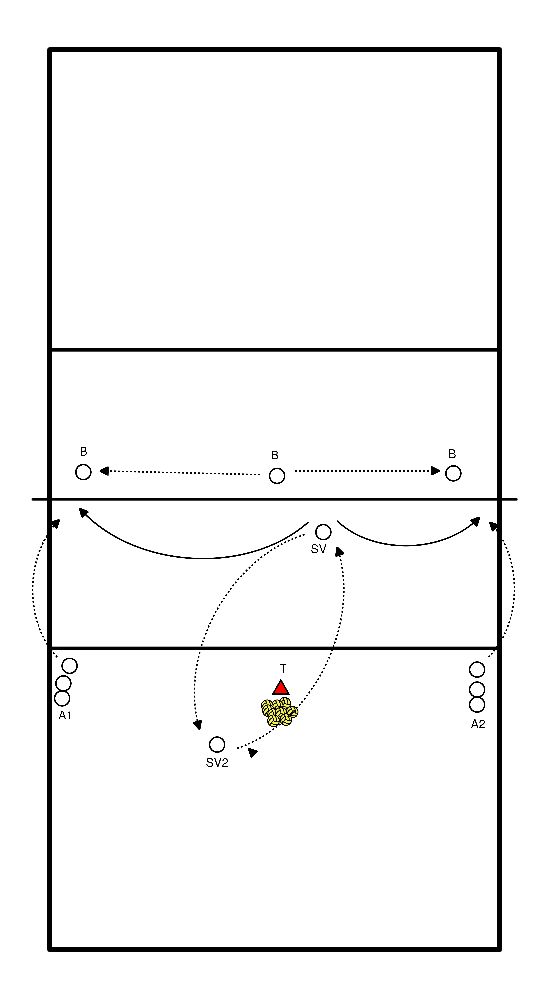
A fixed setter
2 rows on the back line
- Trainer strikes a ball to player 1
- Setter gives setup on player 2 which attacks
- Player 2 directly back for 2nd ball
- (rest in mirror image again)
Next pair
- Per setter each 2 or 3 series
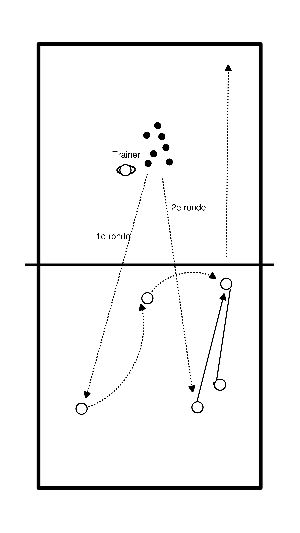
The goal of the core is, that the players can play the ball far overhead
- The players face each other in pairs and play overhead
- Hands well above the head, from the legs, body stretching and point towards the ball when releasing
- The players stand further and further apart from each other.
- Then we form two rows diagonally across the field and we play BH, chasing your ball
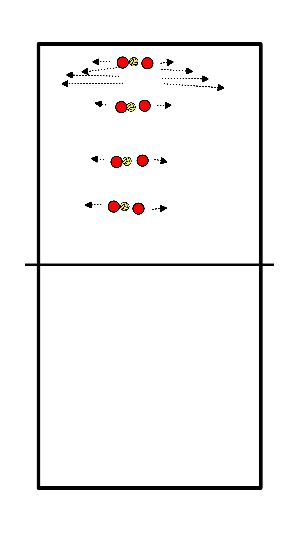
- Pass the ball overhead to each other in a snake-like figure
- Two rows of players that face each other.
- No. 1 plays the ball straight over and connects at the end of the snake.
- Nr 2 plays the ball diagonally over and connects to the end of the snake and so on.
- Hang on as long as possible (field around!)?
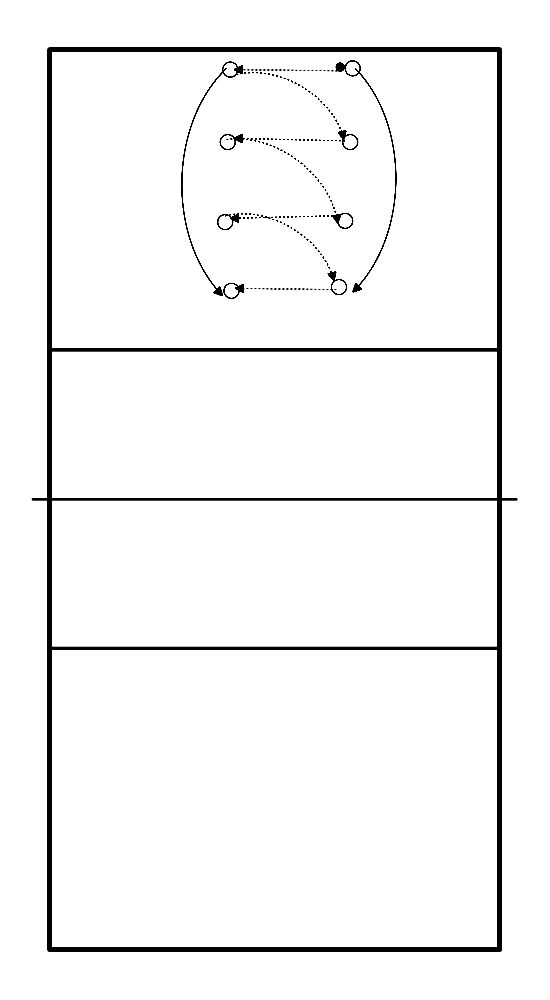
- Holding a plate with your hands at the 9 and 3 positions, this exercise builds the core and also develops upper body strength.
- Specific to volleyball, it helps the shoulder stay healthy and aids in the transfer of power from the core to the upper body.
- This exercise, done with 2 dumbbells, is good for glute strength, hamstrings and improving an athlete's vertical jump.
- Some volleyball players choose to do stationary mat twist exercise for improving core rotational speed.
- Keep in mind that you need to prepare a mat as well as weight (or a medicine ball) for this exercise.
- First of all, you should kneel on a mat and hold a weight (or a medicine ball). Now, your job is to rotate to the right and then return to the center.
- You also need to rotate to the left and then return back to the center.
- It’s another exercise that helps volleyball players develop foot speed.
- Uphill acceleration sprints involve sprinting on an uphill incline.
- You should perform sprints for a certain distance a set number of times.
- It’s a good idea to experiment with sprints.
- Set a number of repetitions, distance as well as the duration of break for sprints.
- Doing exercises like colored cones circles helps improve foot speed that’s incredibly important for a volleyball player.
- First of all, you should prepare randomly colored cones.
- You should also ask a coach (or friend) to assist you with this exercise.
- At the next stage, you need to place colored cones in the circle.
- Your goal is to create a circle that is 20 feet wide.
- Now, you need to stand in the center of the circle.
- The job of a coach (or friend) is to pick one of colored cones for you.
- So, you will need to approach to the appropriate cone as soon as possible and then return back to the circle’s center using a crossover step.








